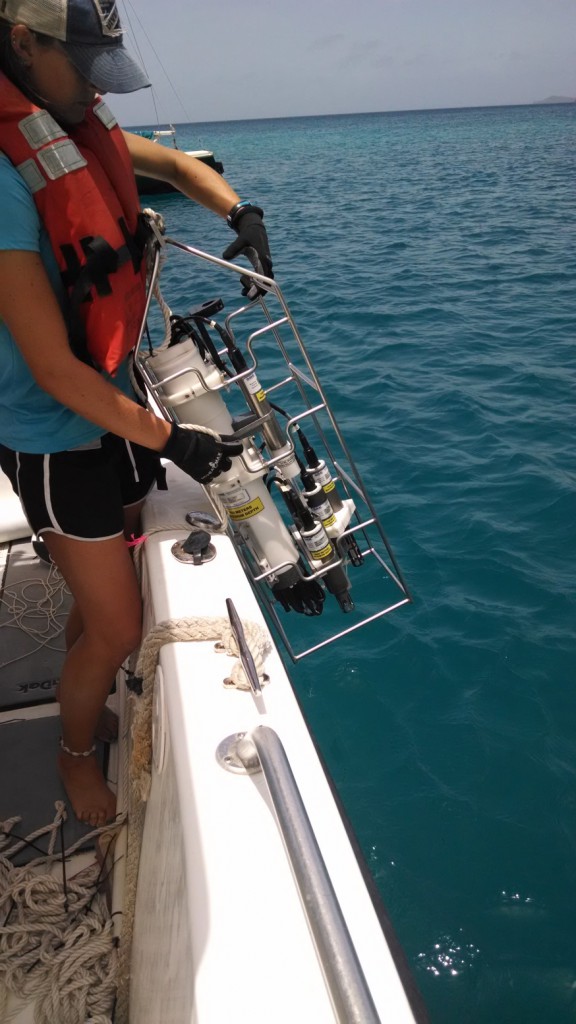
Kerrigan hiking through the VI National Park on St. John
This past August, I spent two weeks in the U.S. Virgin Islands collecting data for my graduate thesis research. My project is titled, “The effect of watershed development and climate on coral reefs in the U.S. Virgin Islands using satellite based sensors”. To give you a little bit of background, these islands are highly mountainous and when it rains, the surrounding waters receive high amounts of runoff full of sediments and surface pollutants. Combined with increasing rates of urbanization and rainfall events from climate change, these inputs are causing major decline of the coral reefs. St. Thomas is the most densely populated island with the greatest development. The Charlotte Amalie harbor is a popular stop for cruise ships and can fit over 8 ships at one time—talk about a ton of pollution! St. John on the other hand, is very underdeveloped and is home to the VI National Park.
During my trip, I was collecting water samples and taking measurements from sites suffering low and high degrees of pollution around St. Thomas and St. John to compare the water quality—before and after major rain events. The University of Virgin Islands allowed me to rent research vessels and lab space for sampling and analysis. Our field days on the boats normally lasted about 5 hours and at each site we were; (a) collecting water samples, (b) finding the Secchi depth (for turbidity), (c) deploying a CTD that measured temperature, salinity, pH, dissolved oxygen, and conductivity with depth and (d) taking optical measurements using a spectroradiometer. At a couple of sites, the spectroradiometer was put into a water-proof casing so I could SCUBA dive and take measurements over healthy and diseased coral heads to compare spectral signatures. In a field notebook I recorded any pertinent observations of the surroundings, weather and cloud cover, water color, etc… Water samples that were collected in the field were immediately brought back to the lab and filtered for total dissolved solids, organic/inorganic matter and chlorophyll.
Over the two weeks, there were a total of four sampling days. Thankfully, everything ran smoothly with minimal setbacks. The biggest challenge was scheduling these field days in coordination with other scientists at UVI needing research vessels or the CTD. Because I was not certified with UVI, I could not operate any of the boats so it became difficult finding boat drivers and extra hands to help out for 5 hours in the field. However, I was introduced to a number of scientists/professors and other graduate students at UVI and learned about a lot of the research being conducted down there. Weekends were spent either taking day hikes through the national park, relaxing on the beaches, snorkeling/kayaking, and eating some of the local food. Overall, it was a great success and I’m currently planning a second trip in December to collect another round of data.

Deploying the CTD into the water column to measure a variety of water quality parameters with depth.
Thanks to Kristi for sharing her experiences with us!
